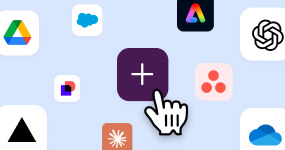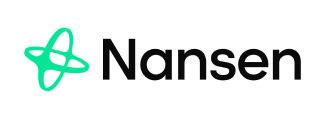
A secure platform made for corporate use
Founded in 2020, Nansen is a blockchain analytics platform that provides cryptocurrency investors with real-time data, trends, and insights so they can make informed investment decisions.
With teams working remotely across 30+ countries, Nansen needed a communication platform to support seamless asynchronous work. The business was originally founded on Discord, but as Nansen grew, it found it challenging to manage and track employees’ channel access.
“Discord’s ongoing ladder of role-based and channel-based permissions where certain roles can override others, meant that users were often missing access to crucial information,” explains Rachel Yu, Senior Operations Manager at Nansen.
Even more pressing was the need for more security and administrative control. As Rachel acknowledges, “Discord’s security issues are no secret.”
Recognising the need for a more robust platform appropriate for corporate use, Nansen transitioned to Slack at the end of 2021. The decision was made easy by Slack’s familiar functionality, strong security features, and conversational tone that better suited Nansen’s goal of breaking down hierarchical bureaucracy and information silos.
Timothy Yu, Senior Business Operations Associate at Nansen, says, “Moving from Discord to Slack was like going from night to day. Slack has transformed how we communicate, so we can work more efficiently as a global team.”

Moving from Discord to Slack was like going from night to day. Slack has transformed how we communicate, enabling us to work more efficiently as a global team.
Every team takes action faster with Slack AI
Nansen is cultivating an AI-first mindset and Slack AI is one of the tools helping it make work more productive. One of the first problems it looked to solve with Slack AI was the volume of communication between employees.
Transparency is a core value at Nansen, but with so many conversations taking place in public channels, identifying the most important information was a challenge. “The team at Nansen is always ready to help – but this can create a lot of noise when there’s a problem. At times there are up to 50 messages in a thread,” says Timothy.
Now, with Slack AI’s channel recaps and summaries, employees can cut through the noise to quickly find information relevant to their roles and responsibilities.
As Rachel explains, “While it’s important for the team to stay across a range of issues, they don’t need every detail. With Slack AI recaps, everyone can get a clear picture of what’s going on, without getting overwhelmed by the back and forth.”
Slack AI summaries also provide a high-level view of incidents, allowing for faster responses. It categorises comments, making it much easier for everyone to understand the situation, identify necessary next steps, and coordinate a chain of responses.
“With Slack AI summaries, we can draft incident response documents 10x faster,” says Rachel.

With Slack AI summaries, we can draft incident response documents 10x faster.
Bringing AI-powered productivity into the flow of work with Slack integrations
In her role as Senior Operations Manager, Rachel works to remove obstacles to productivity by curating a tech stack that supports the output of each employee within the company.
To achieve this, Nansen has fully embraced Slack integrations, including Fireflies AI, a transcription and note-taking tool for meetings.
“Fireflies AI transcribes all my meetings and produces summaries and action points, which are then all easily searchable in Slack. This makes it quick and easy to review past discussions and find key information,” says Rachel.
Rachel is also enthusiastic about the productivity potential of AI, with employees dedicating 10% of their weekly working hours to experimenting with AI tools.
To measure how the team are upskilling with AI, Nansen uses Slack’s Google Sheets integration to run weekly surveys. Keeping these surveys in Slack where employees are already active makes them faster to complete and encourages participation.
Building a comprehensive and accessible discussion archive with Slack search
As a fully remote company with employees scattered worldwide, face-to-face meetings aren’t always an option for Nansen, so the majority of collaboration happens on Slack.
Nansen relies on Slack’s extensive, searchable conversation history to help employees quickly find answers to their questions, whether they’re working across time zones or returning to the office after time away.
“For us, Slack acts more as a knowledge base or internal archive, because that’s where key decisions happen,” says Rachel.
Slack search also helps the operations team respond swiftly to incidents and initiate troubleshooting without waiting for everyone to be online.
“When somebody triggers an alert or flags an issue, our first step is to perform a keyword search in Slack. This allows us to see if others have discussed the issue and helps us trace back to find a resolution,” says Rachel.















